
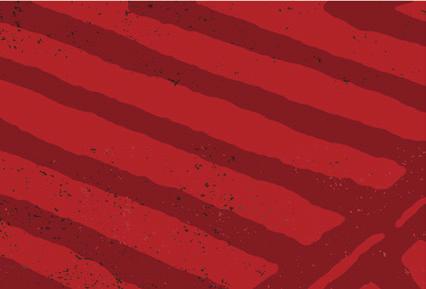
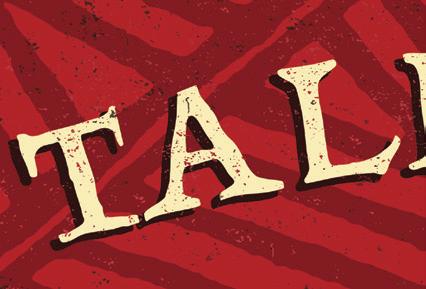
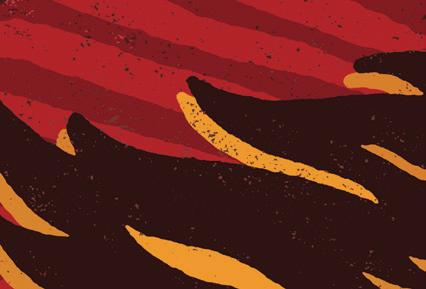

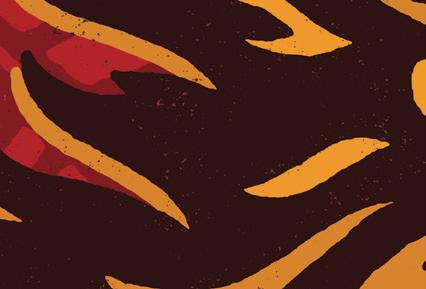



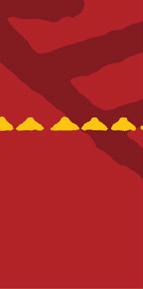
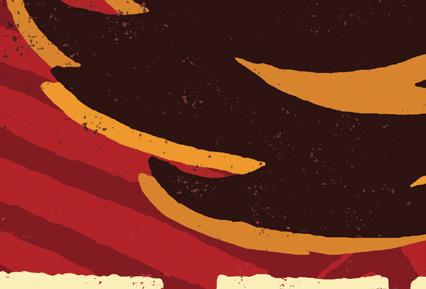

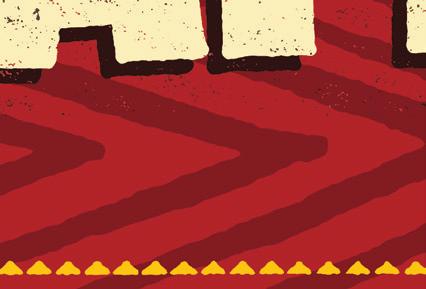
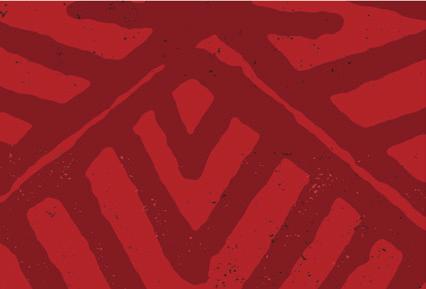

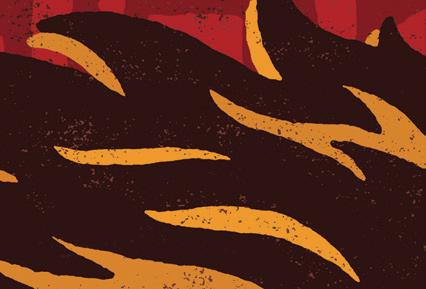
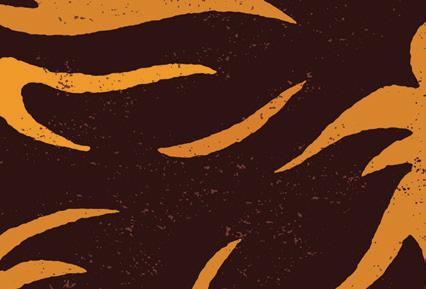
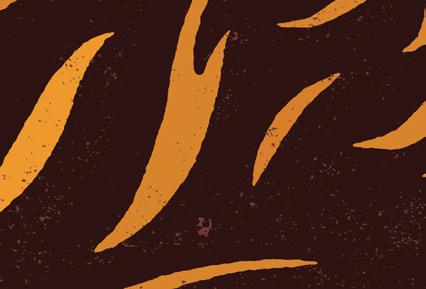
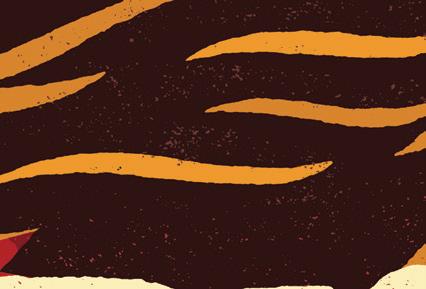
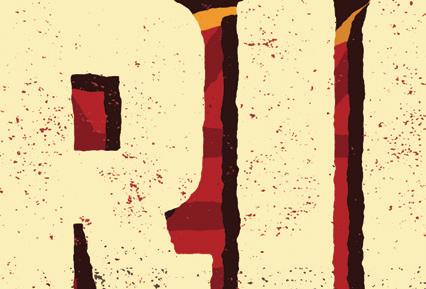
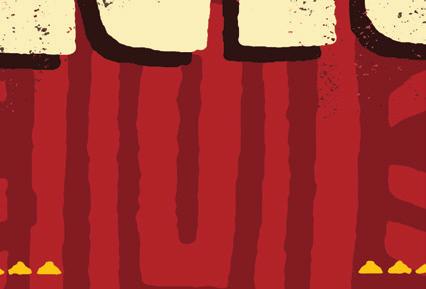
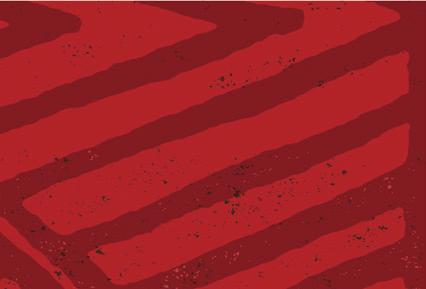
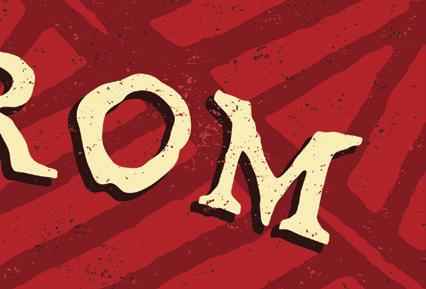
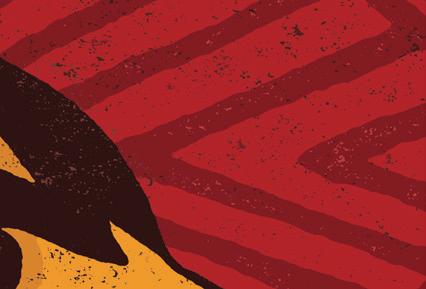
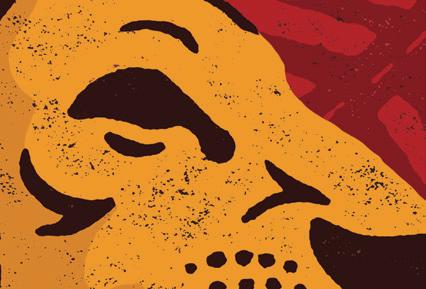
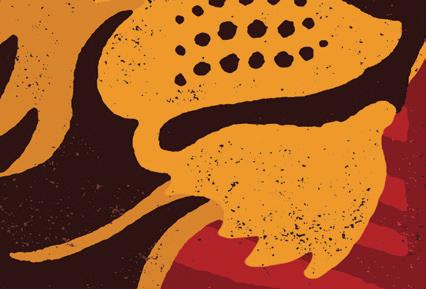
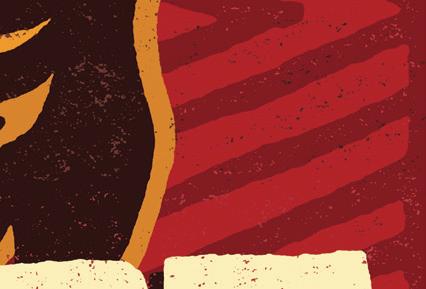
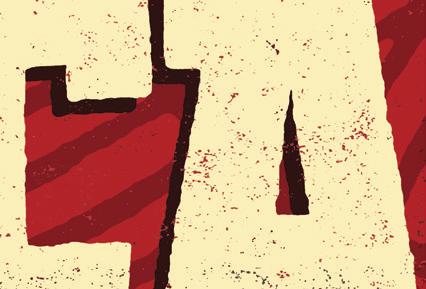
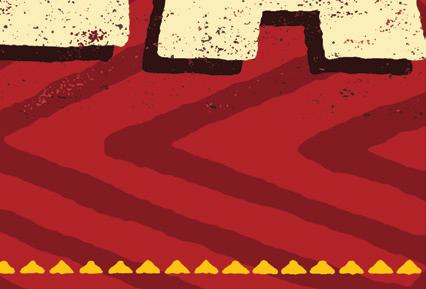








































Nii Ayikwei Parkes is a writer and Senior Editor at flipped eye publishing. A 2007 recipient of Ghana’s national ACRAG award for poetry and literary advocacy, he is a former International Writing Fellow at the University of Southampton and author of the acclaimed hybrid novel Tail of the Blue Bird (Jonathan Cape, 2009), which has won awards in three countries, including the Prix Laure Bataillon in France. Nii Ayikwei writes for children under the name K. P. Kojo and spends his time in the United Kingdom and in Ghana, where he is director of the Ama Ata Aidoo Centre for Creative Writing.
UK | USA | Canada | Ireland | Australia
India | New Zealand | South Africa
Puffin Books is part of the Penguin Random House group of companies whose addresses can be found at global.penguinrandomhouse.com.
www.penguin.co.uk
www.puffin.co.uk
www.ladybird.co.uk
First published 2017
This edition published 2025 001
Text copyright © K. P. Kojo, 2017
Illustrations by Joe Lillington
Illustrations copyright © Penguin Books Ltd, 2017
Penguin Random House values and supports copyright. Copyright fuels creativity, encourages diverse voices, promotes freedom of expression and supports a vibrant culture. Thank you for purchasing an authorized edition of this book and for respecting intellectual property laws by not reproducing, scanning or distributing any part of it by any means without permission. You are supporting authors and enabling Penguin Random House to continue to publish books for everyone. No part of this book may be used or reproduced in any manner for the purpose of training artificial intelligence technologies or systems. In accordance with Article 4(3) of the DSM Directive 2019/790, Penguin Random House expressly reserves this work from the text and data mining exception.
The moral right of the author and illustrator has been asserted
Typeset by Jouve (UK), Milton Keynes
Printed and bound in Great Britain by Clays Ltd, Elcograf S.p.A.
The authorized representative in the EEA is Penguin Random House Ireland, Morrison Chambers, 32 Nassau Street, Dublin d 02 yh 68
A CIP catalogue record for this book is available from the British Library isbn: 978–0–241–73793–4
All correspondence to: Puffin Books
Penguin Random House Children’s One Embassy Gardens, 8 Viaduct Gardens, London sw 11 7bw
Penguin Random Hous e is committed to a sustainable future for our business, our readers and our planet. is book is made from Forest Stewardship Council® certified paper.
For all my kiddies, the world’s best nieces and nephews:
Omara Okailey, Quinceo Fifi, Della Okaikor, Jerome Ayitey, Cameron, Jean Ayikailey, Sarah Marie, Carmen Akuyea, Jodelle Ayikaikor, Jeremiah Kwaku, Leona Ayikaikai and Yaa Aseda. But especially for my little editor, NaaNaa.
Tales from The Caribbean by
Trish Cooke
Tales from India by Bali
Rai
and by
Roger Lancelyn Green
Tales of the Greek Heroes
Myths of the Norsemen
Tales of Ancient Egypt
Compiling and writing Tales from Africa has been a hugely entertaining adventure. A Ghanaian with family roots in the Seychelles, Sierra Leone and beyond, I have friends and family all over the African continent and working on this collection gave me licence to call them and be a questioning child again without shame.
In my early childhood, I often pestered my parents for stories. My impatience for new tales probably fuelled the rapid development of my ability to read. By the age of three, if I wanted a new story I could read one myself.
With hindsight, my fascination with stories is rooted in a desire to know the unknown, to surpass the familiar, to discover the new. I believe that urge exists in all humans to some degree. For that reason, I resist trends towards making stories familiar for readers. What is important, to my mind, is that stories are understandable (not to be confused with familiar), relatable and teach us something new.
Rather than simply retelling very well-known stories from familiar corners of Africa – such as South Africa and
Nigeria – I spoke to friends and family from places like Libya, Madagascar, Angola and Mauritius. Inevitably, kingdoms with strong storytelling traditions such as the Zulu, Akan and Igbo are represented, but I have either found more marginal stories from those traditions, or retold the stories in ways that renew them. For example, the Igbo fable of the tortoise and the birds, made famous by Chinua Achebe, is retold here as ‘A Tortoise Named Ununile’, incorporating Uri, the Igbo custom of body painting, and making it central to Tortoise’s deception. In keeping with the culturally expansive upbringing I had in Accra, I try to respect the place of local traditions and norms in the stories, retaining indigenous names and customs.
There will be words that an untutored tongue might find difficult to pronounce initially, but, as I say whenever I visit a theatre, library or school to read, every word is made up of small units; if you break it up and put it back together you’ll usually get it right.
Ultimately, of the dozens of stories that I read or heard while researching this collection, I decided to retell nine that I absolutely loved. They cover a range of attributes and failings that come into play in all animal (for animals are vital in storytelling) and human life: jealousy, greed, love, forgiveness, ambition, humility, anger, selflessness and grief. Some stories, such as ‘The Rebirth of Andriambahoaka’ and ‘The Frog’s Wedding’, were completely new to me and it was a real delight to discover them over and over again as
I spoke to more people. It is truly stunning how many versions of each story exist in the communities that share them. It proves that even when we don’t know of them, even when they are not widely published or translated, stories continue to live and enrich their communities in new ways.
Because the origins of stories lie in kingdoms that run beyond the borders of what we now recognize as countries, I have largely identified stories by their cultural origin rather than by borders that have come into existence over the last century. I encourage readers to find out about the kingdoms as they have fascinating histories outside of the stories that they used to entertain and teach their citizens. In addition to respecting cultural rather than geographical borders, I have sought to subtly address wildlife and environmental concerns as I reshaped the stories, by highlighting the beauty and harmony of rural life. The Sudan cheetah (Acinonyx jubatus soemmeringii) that appears in ‘The Cheetah’s Whisker’, for example, is now listed as a vulnerable species. It once roamed the East African savannah in large numbers. It’s a truly magnificent cat that should not be hunted simply to provide pets and pretty foot rugs. It is my hope that its role in the story will encourage more people to get involved in protecting it.
I have had some very important guides and companions during this storytelling journey. For every story I have had to check for versions, corruptions and adaptations – all of
which result in great stories in case you were wondering. However, without my international crew of researchers, friends, fellow writers and oral historians, I would never have managed to find the essential starting points for retelling these stories. I would particularly like to thank NoViolet Bulawayo, who pointed me in the direction of Vusamazulu Credo Mutwa’s Indaba My Children: African Folktales as a research source; Hisham Matar, who connected me to Adam Benkato, a researcher on Libyan khurafat (sayings/tales) and currently a Humboldt fellow at Freie Universität Berlin, who provided the bones of ‘Um Bsisi’s Milk’; Brian Chikwava, who translated some reference material from Zimbabwe for me; North Kaneshie area crew, especially Kofi Oppong, for all the ‘tooli’ when we were kids; Ian Hussain and Shelina Permalloo for getting me thinking about Mauritius; and Jean Luc Raharimanana, who did the same for Madagascar. Yet, in the end, the stories would not have been as fun to write without my ever-present reader and critic, my daughter NaaNaa, whose frowns and laughter were indispensable editing prompts. She has my unreserved gratitude. Never in the history of literature has an eight-year-old been so powerful.
Finally, of course, I’d like to thank the team at Puffin who have had to endure my erratic bursts of writing and my unyielding defence of names and norms from the African continent. My sincere gratitude to Alex Antscherl, who commissioned me, and to Helen Levene, my editor,
who has been as sensitive, open and responsive an editor as one could ever hope for.
I sincerely hope you enjoy these stories, which are but a minute sampling of the thousands of stories that enrich the everyday lives of children and adults across all the countries in Africa. I am proud to share these nine with you in the English language – in print.

A Sakalava tale
Inthe days before we were, the days before today, the earth’s creatures were all mixed up. You could be a crocodile and a grasshopper – a crochopper, or a snail with the red blood of a lion – a snaion. It was hard to tell what a creature was just by looking, because a snaion, for example, looked just like a snail, although it could roar at night. However, it was possible to tell which creatures stayed on one land – onelanders, and which ones lived on many, as birds do – birdlanders. This tale is
about both – a bird with a human heart called Ivorombe and a human king with the eyes of a lemur called Andriambahoaka.
Mother bird, Ivorombe, was a large and unusual bird. She had an orange-red bill that weaved through trees like a flashing light when she passed through a forest. She had white tail streamers that drew loops as she flew, and a streak of pink on her back. Her eyes were particularly striking, with black eye patches over her white feathers that made it look like she was wearing spectacles. Her bill wasn’t just colourful, it was big, with a large bottom for storing food and other useful things – a bit like a pelican’s bill. In fact, Ivorombe is the grandmother of herons and tropicbirds and pelicans.
One day Ivorombe was flying home from a visit to her cousins in a far-off continent when she felt her eggs grow heavy in her. She needed to lay them right away so that she wouldn’t lose them in the ocean. Luckily, there was an island close by and she flew there, swooped around to find a safe place in the forest, far from the humans who lived on the island, and made a strong nest of twigs, grass and leaves.
She laid her eggs, tucked her tail streamers beneath her and sat on them.
For weeks, Ivorombe stayed on top of her eggs. Her body kept them at just the right warm temperature to hatch